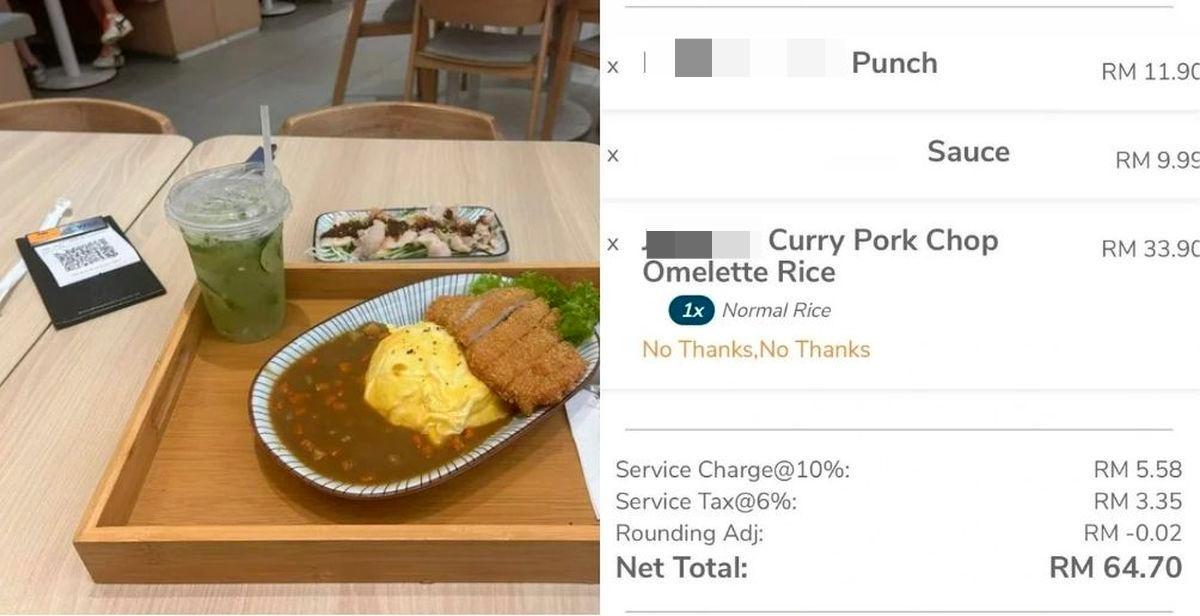WHEN it comes to service tax and charges in eateries, customers often believe that these fees are a result of the customer service they receive when dining in—such as a waiter taking orders and serving food.
However, with orders increasingly being made online or through QR codes at eateries, many are left wondering: are these charges still applicable?
A post on Reddit recently highlighted a case where a customer was charged a shocking RM64 for a meal, side dish, and drink at a Japanese eatery located in a shopping complex.
Aside from the food, netizens were particularly surprised by the 10% service charge and 6% tax, which amounted to nearly RM9, despite the order allegedly being placed via a QR code.
In the post, the customer had ordered a rice dish with curry gravy accompanied by a pork chop and omelette, a pork side dish with garlic sauce, and a lime mint punch.
Without the service charge and tax, the total came to RM55.80.
While many netizens acknowledged the high price of Japanese cuisine in Malaysia, they were puzzled by the additional service charge and tax — especially since the customer’s order was not taken by waitstaff.
One user compared the situation to American tipping culture and noted that European Union laws require transparent pricing, with taxes and surcharges included in the displayed prices.
“I have no problem paying RM60 for a meal like this in a shopping mall. But I do have a problem with restaurants not including the service charge and tax in the listed price of the food,” one netizen commented.
“Didn’t you see the price before ordering? Usually, restaurants using QR codes will display the prices before you can confirm your order,” another user pointed out.
“Lousy restaurants charge a 10% service fee and still ask us to order via QR code (in some places with poor mobile coverage). Totally unacceptable! Once I’m in a restaurant, I expect a waiter to be available to answer any questions about the menu. That’s what the 10% is for,” another user added.
Given that the eatery is located in a shopping mall, a few users also noted that food and drink prices are often higher to account for high rental costs that restaurants need to cover.









